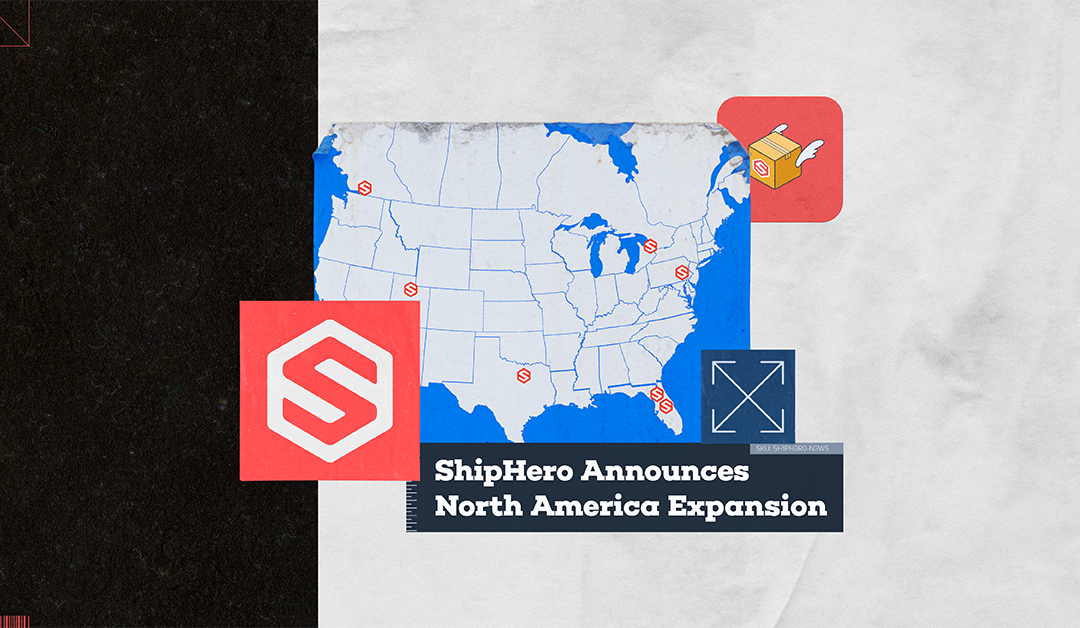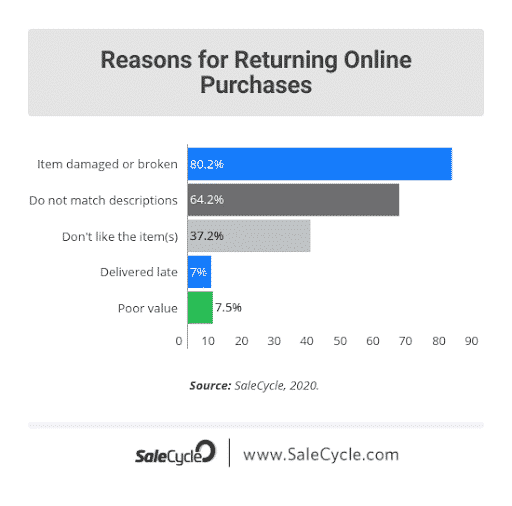
May 24, 2022 | newsroom
NEW YORK , May 24, 2022 /PRNewswire/ — ShipHero (https://shiphero.com/), the leading shipping and logistics platform for over 5,000 e-commerce brands and 3PLs, announces its first international acquisition, Canadian delivery provider, Delivery Net, – providing 250,000 square feet of warehouse space in Toronto, anchoring the company’s commitment to supporting its customers as they scale operations in new markets.
With ongoing disruptions to the supply chain, it has never been more logistically challenging to ship goods and products, especially internationally. Delivery Net has been a leader in the Canadian marketplace for over twenty years. Now a key partner to ShipHero’s growing fulfillment network, Delivery Net will serve as the Canadian 3PL extension for ShipHero, with warehouses in both Toronto and Vancouver. ShipHero now offers fulfillment services out of both locations plus duty-free imports through its Section 321 certification, in addition to integrated zone skipping in its top-rated Warehouse Management Services (WMS) for all Canadian Customers.
For ShipHero CEO & Founder, Aaron Rubin, the expansion of ShipHero couldn’t have come at a better time. “Currently, we serve over $8 billion a year of GMV. That significant volume, paired with an unpredictable and fast-growing e-commerce sector, makes expanding our physical network a necessary step in order to optimize the tools and resources we can offer customers” says Rubin.
This activity is the latest in a series of strategic gains made by ShipHero since closing its series-A funding round in 2021, which include the acquisitions of Utah-based warehouse Golden Egg Solutions and Florida’s Cargo Cove, alongside a 200,000-square-foot warehouse expansion in North Las Vegas at the close of Q3 2021. In total, ShipHero has expanded its footprint to a total 1.1 million square feet, including 5 acquisitions in the last 12 months.
ShipHero has a $100 million run rate this year, up from $5 million in 2019. The company has experienced 20x growth over the last three years, with plans to further build out its fulfillment capabilities on a global scale in 2022.

Jan 7, 2021 | Best Practices, Blog, Fulfillment, Warehouse Management Software, Warehouse Operations
5 Ways Online Stores Can Navigate COVID-19 and Impress Online Shoppers
Even as the holiday decorations go back into storage and Mariah Carrey retires her microphone for another 11 months, business is still ba-hooming for online brands and retailers. With the encroaching cold of January and talks of more lockdowns on the horizon, more and more shoppers are turning from their old brick-and-mortar ways, to finally enter the new era of online shopping.
As online brand owners and digital retailers, we owe these potential new customers a great first impression into the online shopping community. So let’s look at five things you can do to delight your new and existing customers as they evolve to meet the new world around them.
Fulfillment at the Forefront
Someone has to say it. In today’s understatedly hectic marketplace, with traditional carriers like USPS, UPS, FedEx and even Amazon stretched to their limits due to the massive surge in online shopping, the most important step you can take during right now to secure the success of your online store is to solidify your Fulfillment strategy AKA make sure that customers can actually get your product.
At a time when market uncertainties and shopper anxieties are at an all time high, online retailers must take every precaution to retain their customers’ trust. Retailers that have relied solely on traditional carriers or FBA (Fulfillment by Amazon) in the past are now finding resiliency in their operation by diversifying their shipping methods and outsourcing to third party logistics (3PL) companies.
3PL companies easily handle warehousing, forwarding, packing, consulting, order fulfillment, brokerage and transportation documentation, while offering fulfillment management software that seamlessly integrates into your business systems; e.g., Shopify.
Not only that, high shipping costs and long shipping durations are the leading factors in stopping people from purchasing online. Online stores that have been able to reduce both are realizing immense competitive advantages and quickly growing their customer base, as would-be brick-and-mortar customers are confidently becoming online shoppers.
Whether you are just starting an online business or already operate a successful brand, prioritizing your fulfillment strategy is the #1 way to navigate the ecommerce realm during the COVID-19 pandemic.
Know Your Customer Base and How It’s Changing
You may have already noticed, but customers have been forced to change their shopping habits quite a bit. According to a study by JP Morgan, e-commerce now accounts for 16.1% of all U.S. sales, up from 11.8%, and news outlet BBC reported that COVID-19 has effectively eliminated the marginal store revenue accrued through a customer browsing in-person.
What this means is that online retailers need to have a clear picture of their online shoppers and their in-store shoppers, as well as how both of them engage with the digital store. You may already know your customers and have well-defined customer segments and demographic information, so you mustn’t reevaluate who they are, but rather how they now act.
Traditionally, technologically-native shoppers in the Gen Z or Millennial generation have been more inclined to browse in-store followed by purchasing online, while the older generation has statistically favored in-store transactions. COVID-19 has flipped this mantra for some, especially those that are less willing to venture out to shop.
So be sure to understand who is visiting your site now that wasn’t before. You may be welcoming new shoppers that could get frustrated with complicated browsing and checkout processes, or perhaps your customers are engaging with your brand in an entirely new way.
Optimize Your Shopping Journey
Since online shoppers lack the ability to physically touch, try on, and compare items, they may need more product information to feel comfortable completing a purchase. Not only that, customers will be less likely to return a product that is accurately displayed on your store.
For that reason, consider implementing the following to provide the most accurate information to your customers:
- Clear sizing charts
- Product comparison tools
- High-quality product images, including dimensions and materials
- Customer reviews
Once your customer decides to purchase, make it as easy as possible with a frictionless checkout process. Up until now, the majority online shoppers have been technological natives (i.e., younger), so many retailers may have settled on overly-complicated websites that rely on the customer being tech savvy.
Be aware that new online shoppers could get frazzled by complexity and subsequently abandon the checkout process when it loses them. To avoid this from happening, reevaluate your user journey from landing page to checkout confirmation, paying special attention to:
- Product categorization
- Product page layout and information
- Personal information collection
- Cart view and editing
- Payment, shipping and return options
Customer support options like a live chat box needs to be clearly visible so the customer can reach out if they need assistance. Additionally, consider using heat-mapping or other anonymous tracking tools to find where exactly customers are getting frustrated and abandoning the process. This method of discovery along with design and testing is an important way to improve the user experience (UX) of your shopping journey.
Manage Your Returns, Don’t Let Them Manage You
Returns are the unavoidable fallout of online shopping, and the best thing online companies can do is to prepare for them to happen. In our past blogs we’ve detailed the rising number of returns and how online retailers can turn returns into a profitable venture.
When making an online purchase, your brand’s return policy is often the very first thing a customer will look for, along with your shipping options and data privacy policy. So make sure your returns policy is highly transparent and overly generous.
Beyond that, a smooth returns process creates loyal, repeat customers. Be sure to give your customers the ability to, at a minimum, print labels, track their returns, and know the status of their refund.
Refunds are a messy business, and that’s why many 3PLs like ShipHero are partnering with returns management companies like Returnly to automate the return process including the issuance of credit/refund, to make it as easy as possible for the retailers and their customers.
Stay in Touch With Your Customers
The most effective way to weather a crisis and maintain relationships is to keep sustained communication with your customer base, according to Harvard Business Review. In times of chaos, customers may seek to know how your brand is responding, and determine if their brand loyalty should remain. HBR suggests the following approach to communicating with your customer base during a crisis, and it has a lot of HEART.
- Humanize your company
- Educate about change
- Assure stability
- Revolutionize offerings
- Tackle the future
By following the above five recommendations, your brand will be sure to win your fair share of the growing number of online shoppers, whether it’s their first time or their millionth.
Ready to tackle fulfillment for your online store? ShipHero is a leading provider of SaaS 3PL software for ecommerce fulfillment that is trusted by over 4000 ecommerce brands and 3PLs every day.
Learn more about ShipHero’s industry-leading warehouse management software.

Dec 28, 2020 | 3PL Warehouse Management, Best Practices, Blog, Warehouse Management Software
Happy Holidays from everyone here at ShipHero! Black Friday has officially kicked off the gift-shopping extravaganza and like you, we’re all scrambling to find that perfect gift for that relative we haven’t seen in-person for the past 10 months… should be easy. (Hint: pajamas). While gift giving was difficult before, with 34% of Americans reporting to return gifts after the holiday season, knowing what to get your friends and family in 2020 is near impossible. So… just make sure to put that receipt in the box.
For retailers, the process of handling product returns, also known as reverse logistics, has always been a messy business, especially after the gift-giving season. According to Shopify, approximately 40% of customers have returned an online purchase in the last 6 months, and 42% of customers report buying a product with full intentions to return some or all of the order in the future. Product returns impact conversion rates, increase costs, and complicate inventory management. So, how can retailers minimize returns, all while making sure that they maintain a good relationship with their customers?
To celebrate our latest partnership with reverse logistic solution company Returnly (and the exclusive holiday deal), Shiphero proudly presents the following the three steps you can take to lower your return rates, improve your customer experience, and in fact develop a competitive advantage through an effective reverse logistics strategy.
Step #1: Offer a Clear and Generous Return Policy
Of course, return rates will drop with a no-refund or strict refund policy, making customers jump through hoops to return your item; however, this will drastically lower your conversion rates at checkout, lower the incentives for new customers to become repeat customers, and ultimately hurt your brand in the long run. Important topics to include in a return policy are:
- Specific products that can’t be returned, like high-ticket items or discounted items
- Additional fees such as restocking fee or shipping
- How long the customer has to return the item
- Conditions for return such as if the receipt is required, or tags, or that it hasn’t been used
- Reimbursement method like cash or store credit, and qualifiers for each method
Behind free shipping, free returns are a huge driver for customers to shop online, and 96% of customers reported that they would shop with a retailer again based on an easy return experience. Many retailers have offset the cost of free returns through increases in price or having customers pay for shipping.
The key takeaway is that your return policy should inspire confidence in your customers to buy from you the first time, and then provide an enjoyable shopping experience (albeit a return) to incentivize them to shop again, and maybe even tell a friend.
The return policy needs to be clear, concise and widely distributed. The policy language should be as easily understood as possible, devoid of legal jargon and fine print. Once set, it should be communicated clearly to both your customers and your employees. In fact, many companies place their return policy in several locations on their landing page and throughout their checkout process, and if it’s generous enough, they advertise it proudly.
And now that Black Friday 2020 has officially kicked off the holiday shopping season, offering a customer-centric return policy will certainly attract more holiday sales, as well as inspire repeat business in the future.
Step #2: Reduce Rates of Return
Simply put, fewer returns means lower costs — with each returned item adding restocking, processing, and possible refurbishing or scrapping fees. So the next thing to focus on is reducing the amount of returns that your company receives
MIT Sloan breaks down returns into two components: controllable returns and uncontrollable returns. Controllable returns are the result of errors or mistakes by the business or customer; as such, each controllable return has an identifiable root cause or causes that can be addressed and mitigated.
For example, the image below lists the most commonly reported causes for returns in 2020, alongside the percentage that they occur.

Around 80% of returns were the result of a damaged or broken product, and 7.5% were from a delay in delivery. These are controllable returns showcasing issues with your fulfillment process, which can be addressed through better packaging, better care, or a better third-party fulfillment provider.
Next, we see 64% of returns were the result of a mismatch between product and description. This is also a controllable return highlighting the need for better online product images or descriptions, or an updated sizing chart for clothes and shoes, to more accurately present the product. In fact, many clothing and footwear companies have minimized product returns by employing a “size and fit” specialist, contactable via phone or chat boxes on the company website.
The last controllable return we see making up 7.5% is poor value, which can either be addressed through your manufacturing process or marketing strategy.
The remaining factor is that the customer just didn’t like the product. This is an uncontrollable factor in some respects, in that it could have been a gift or perhaps the customer had a change of heart; but on the other hand, this could even be broken down into smaller factors — some of them controllable. Why didn’t the customer like it?
Finding the answer to the above question is where a well-designed return process needs to come in. Among other things, your company must ensure that all necessary data points are collected throughout the return process in order to further improve your return rates… which brings us to step 3.
Step #3: Optimize Your Return Process
According to MIT Sloan, an efficient reverse logistics strategy has the potential of reducing processing costs by up to 50% or more. For that reason, companies that have a systematic approach to handling returns hold a massive competitive advantage over those companies that treat returns in an ad-hoc way, and major corporations hire departments specifically dedicated to handling returns and optimizing the return process.
At a high level, every return process has the following steps: Receive, Sort, Analyze, Decide, Execute. The retailer receives the returned product, sorts it based on certain factors like reason for return, analyzes its condition, decides what to do with it, then executes on that decision whether it is restocked, refurbished or scrapped.
Make Decisions Upfront
What are your options when you get a return? Creating proper decision trees (IF, THENs) with clear conditions stemming from your return policy gives your company a roadmap to processing returns. This could have many different variations and nuances per your specific business, but as an example it could look like the below:
- IF there’s no issues, THEN restock and process refund
- IF the product is broken AND still fixable THEN refurbish, process refund, and sell through other channels
- IF the product is defective THEN send back to manufacturer for rebate
- IF the product is no longer salvageable THEN scrap
For refurbished products, find other channels to sell your returned items. The loss margins on returns can be minimized through effective and creative measures like selling refurbished goods in other regions or to different markets.
Pretty straightforward but until recently, the return process has been an extremely labor-intensive endeavor, from sorting to analyzing to deciding, thereby requiring loads of labor hours to process just one return. The answer to this sticky situation just so happens to be what an Australian calls his car.
Auto, mate
But seriously, automation is the key. Retailers have found enormous success automating as much of the process as they can, while making the process self-serve for the customer. From the printing of return labels to the issuance of credit, companies that automate the process see large boosts in efficiency and cost-savings. According to Returnly, during a return process, customers expect, at a minimum, to be able to:
- Print labels
- Track their returns
- Know the status of their refund
This may require having a dedicated portal for refunds. And if you’ve made the necessary decisions upfront, these can be automated as well, further reducing your processing costs and allowing your return team to focus on any extenuating circumstances.
Along with automation comes data aggregation. Knowing why your customer returned the product along with other data points can paint a very clear picture on your reverse logistics landscape, allowing your company to address the various pain points and reduce your return rates.
This, among many other reasons, is why ShipHero has partnered with Returnly to automate the return process for any 3PL or retailer using the ShipHero platform, thereby minimizing human touches, improving accuracy, and reducing costs and errors in the return process, all while keeping the merchant updated in real-time.
This leads to faster returns processing time, faster issuance of refunds to the customer, and faster restocking or resale of the returned goods. Everybody wins, mate.
Outsource
Processing returns necessitates much more than a part-time effort. Using a third-party provider to process your returns is a good solution if your company lacks the time, resources or know-how to process returns, or if you have a low amount of returns.
Because some specialize in processing product returns, third-party providers can perform product returns quickly and accurately, often through the use of industry-leading software solutions, thereby lowering costs and increasing revenue.
Also, if your company does not have dedicated personnel or procedures for handling product returns, you consider instituting a third-party to improve the process by delivering state-of-the-art inventory management solutions and data aggregation capabilities.
Conclusion
In summary, to handle the growing impact that returns have on your business, it is important to have a clear and generous return policy that fits your business needs, to consistently find and address the causes for returns, and to optimize your return process through automation or outsourcing.
ShipHero is proud to announce our partnership with Returnly to help empower retailers and 3PLs using the ShipHero platform to take control of their product return process.
And to help you successfully navigate the upcoming return season, we’ve secured our customers access to an exclusive deal — two months free when you sign-up for a Returnly Premium plan before January 31st.
To learn more and claim your offer, click here.

Dec 16, 2020 | Blog, Fulfillment, Warehouse Management Software
It’s official! Returnly and ShipHero have teamed up, and ShipHero users have access to an exclusive deal. This breakthrough integration allows ShipHero users to offer an end-to-end product return experience. So, what does this mean for ShipHero users?
Automation
Returnly helps Shiphero users create a fully branded, self-serve return center, complete with all the necessary automation and policy controls to reduce operating costs and give customers all the options they want upfront.
Returnly Credit
Mistakes happen. If you ship the wrong order, send the right one immediately and Returnly will accept the risk of the customer actually returning the order. Returnly lets shoppers return or exchange items for a different size, color, or something new without contacting your business.
If a shopper opts for a refund, Returnly offers an instant credit to shop your site while the return is processed. And when you save the sale, Returnly pays for the order so your customer gets the right item before returning the wrong one, completely risk free. This decreases your shipping time and increases the return experience for the customer.
Convert Returns to Repurchases
ShipHero and Returnly seamlessly transfer data to manage and track the return process within ShipHero’s platform. This improved data integration with Returnly makes returns seamless for you and the customer, better positions you to convert returns into repurchases, and saves time and holiday revenue for your business.
Exclusive Offer
To help you successfully navigate the upcoming return season, ShipHero has secured our customers access to an exclusive deal — two months free when you sign-up for a Returnly Premium plan before January 31, 2021.
To learn more and claim your offer, click here.




